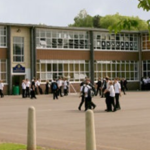By FELICIA FONSECA
Associated Press
FLAGSTAFF, Ariz. (AP) _ Seventeen candidates are running for president of the Navajo Nation, a post that wields important influence on the country’s largest American Indian reservation.
The top two vote-getters in Tuesday’s primary will advance to November’s general election. More than 114,000 Navajos are registered to vote.
The race features a mix of seasoned politicians, political newcomers and the sitting president. Their platforms include securing water rights, enticing business to an area with a more than 50 percent unemployment rate, involving Navajos in decisions on government structure, and promoting tribal culture and tradition.
At the most basic level, Navajos want better roads, and electricity and water at their homes, said tribal Attorney General Harrison Tsosie. About 70 percent of the roads on the reservation are unpaved, an estimated 16,000 families don’t have electricity and many more don’t have telephone service, water or natural gas services, according to the tribal utility provider.
While the president is the tribe’s top elected official, the post generally is seen as less powerful than the Navajo Nation Council. The president earns $55,000 a year and represents the tribe to outside agencies.
Other tribes have looked at the Navajo Nation as a model for incorporating traditional laws into the court system and for securing regulatory authority over air and water from the U.S. Environmental Protection Agency. A proposed junk-food tax on the Navajo Nation also has gained attention among tribes nationally.
Despite that, the Navajo Nation remains largely unconnected to national American Indian organizations because of its size, influence and uncompromising nature, said former U.S. Bureau of Indian Affairs Assistant Secretary Carl Artman. The Navajo Reservation is larger than any single American Indian land base, covering 27,000 square miles in Arizona, New Mexico and Utah. Almost two-thirds of the 300,000 Navajos live on the reservation that has some of the most iconic landscapes in the Southwest and is rich in natural resources.
“They’re not waiting for the world to give them direction, they’re actually out there cutting their own direction,” Artman said.
Whoever becomes president of the Navajo Nation will have the attention of Indian Country, he said.
Navajo President Ben Shelly, who worked as a heavy equipment operator before being elected as a Tribal Council delegate, county supervisor in New Mexico, vice president of the tribe and then president, is seeking a second term. His challengers include former President Joe Shirley Jr., who worked to reduce the Tribal Council from 88 members to 24 and secure a presidential line-item veto through the tribe’s first successful ballot initiative; tribal lawmakers Kenneth Maryboy and Russell Begaye; former Arizona state Rep. Chris Deschene; tribal elections director Edison Wauneka; and the third-place finisher in the 2010 Navajo presidential primary, Donald Benally.
The others are Carrie Lynn Martin, Myron McLaughlin, Dale Tsosie, Duane “Chili” Yazzie, Dan Smith, former Navajo lawmaker Kee Yazzie Mann, Hank Whitethorne, Edison “Chip” Begay, Moroni Benally and businessman Cal Nez.
Navajos also will narrow down the list of those seeking a seat on the Tribal Council on Tuesday. Polls are open from 6 a.m. to 7 p.m. MDT.









